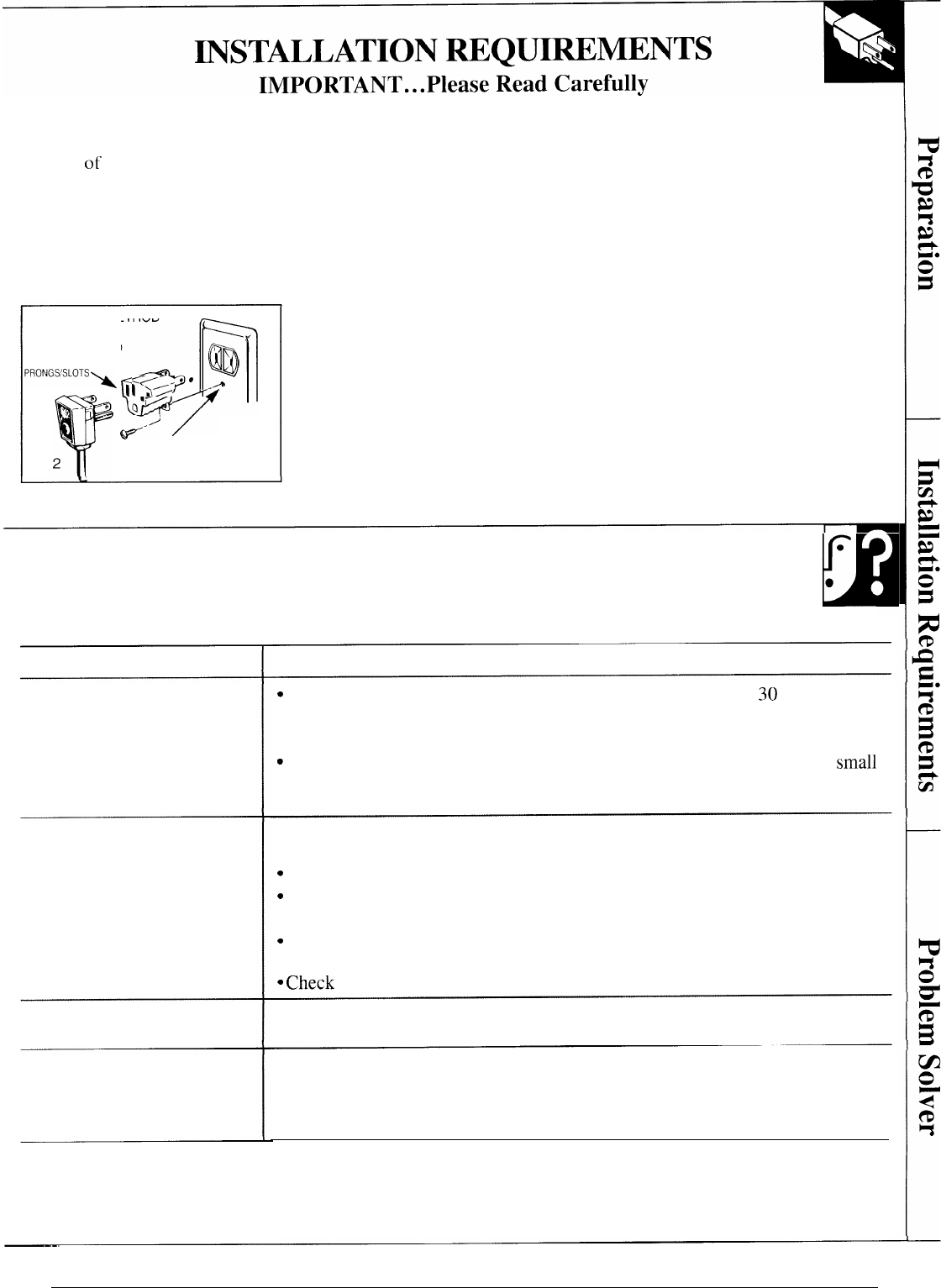
Use of Adapter Plugs
Because of potential safety hazards under certain
conditions, we strongly recommend against use of an
adapter plug. However, if you still elect to use an
adapter, where local codes permit, a TEMPORARY
CONNECTION may be made to a properly grounded
two-prong wall outlet by use of a UL listed adapter
(Fig. 2), available at most local hardware stores.
TEMPORARY METHOD
(ADAPTER PLUGS NOT
PERMITTED IN CANADA)
ALIGN LARGE
&
@
‘RONGs’sLOTs’l&
,/;.
e
.>
a“
w-’
/
INSURE PROPER GROUND
Fig.
AND FIRM CONNECTION
BEFORE USE
The larger slot in the adapter must be aligned with the
larger slot in the wall outlet to provide proper polarity in
the connection of the power cord.
CAUTION:
Attaching an adapter ground terminal to the
wall outlet cover screw does not ground the appliance
unless the cover screw is metal, and not insulated, and
the wall outlet is grounded through the house wiring. You
should have the circuit checked by a qualified electrician
to make sure the outlet is properly grounded.
When disconnecting the power cord from the
adapter, always hold the adapter with one hand. If
this is not done, the adapter ground terminal is very
likely to break with repeated use.
Should the adapter ground terminal break, DO
NOT USE the appliance until a proper ground has
again been established.
QUESTIONS?
USE THIS PROBLEM SOLVER
PROBLEM
REFRIGERATOR
DOES NOT OPERATE
MOTOR OPERATES
FOR LONG PERIODS
MOTOR STARTS &
STOPS FREQUENTLY
VIBRATION OR
RATTLING
POSSIBLE CAUSE
s
May be in defrost cycle when motor does not operate for about
30
minutes.
● Numbered temperature control set at “0.”
● If interior light is not on, refrigerator may not be plugged in at wall outlet.
s
If plug is secure and the refrigerator still fails to operate, plug a lamp or a
small
appliance into the same outlet to determine if there is a tripped circuit breaker or
burned out fuse.
● Normal when refrigerator is first delivered to your home—usually requires 24
hours to completely cool down.
Q
Large amounts of food placed in refrigerator to be cooled or frozen.
Q
Hot weather—frequent door openings.
● Door left open.
c
Temperature controls are set too cold. Refer to instructions for
use of TEMPERATURE CONTROLS.
s
Check ENERGY-SAVING TIPS.
● Temperature control starts and stops motor to maintain even temperatures.
● If refrigerator vibrates, more than likely it is not resting solidly on the
floor and front leveling legs need adjusting or floor is weak or uneven.
Refer to LEVELING LEGS.
● If dishes vibrate on shelves, try moving them. Slight vibration is normal.
(continued next page)
9
